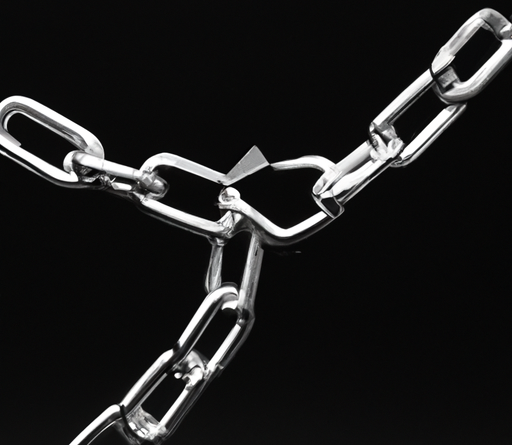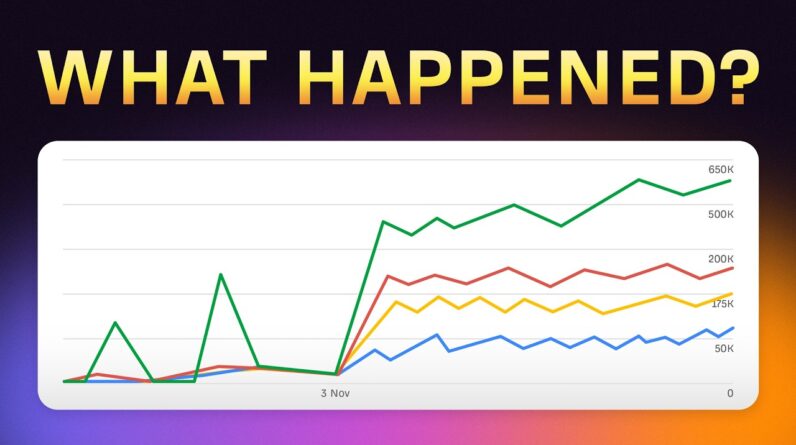
Are you struggling with broken links on your website? Don’t worry, you’re not alone. Broken links can be frustrating for both website owners and visitors. They not only hinder user experience but also impact your website’s credibility and search engine rankings. So, how do you go about fixing these broken links? In this article, we will explore some simple yet effective methods to help you identify and resolve broken links on your website, ensuring a smoother browsing experience for your visitors. Let’s get started!
Overview of broken links
Definition of broken links
Broken links refer to hypertext links on a website that are no longer functioning correctly. When clicked, these links either lead to an error page (404 Error) or result in no webpage being displayed. This can be a frustrating experience for users who are seeking specific information or attempting to navigate through a website.
Importance of fixing broken links
Fixing broken links is crucial for maintaining a positive user experience on your website. When visitors encounter broken links, it can give the impression that your website is not well-maintained or lacks credibility. Additionally, search engines like Google consider broken links as a negative ranking factor, which can harm your website’s visibility and organic traffic. It is essential to regularly identify and resolve broken links to ensure your website remains user-friendly and search engine optimized.
Types of broken links
There are several types of broken links that can occur on a website:
-
Internal broken links: These links point to pages within your own website that no longer exist or have been moved without proper redirection.
-
External broken links: These links point to pages on other websites that have been removed, renamed, or relocated.
-
Redirect chains: This occurs when a series of redirects is in place, and one of the redirects in the chain is broken.
-
Orphaned pages: These are pages on your website that have no internal or external links pointing to them, making them inaccessible to users.
Impact of broken links on a website
Broken links can have several negative impacts on a website:
-
Poor user experience: When visitors encounter broken links, it frustrates them and may lead to them leaving the website, resulting in a high bounce rate. This can decrease the time spent on your site and reduce the chances of conversions or desired actions.
-
Negative SEO consequences: Search engines consider broken links as a sign of poor website maintenance. This can adversely affect your website’s ranking and visibility in search engine results.
-
Lost opportunities: Broken links can prevent users from accessing valuable content, such as articles, product pages, or resources. This can lead to missed opportunities for engagement, conversions, or sharing of your content.
-
Decreased credibility: A website with broken links can negatively impact the perception of your brand or business. It can give the impression that your website lacks attention to detail and may cause users to question the reliability or trustworthiness of your content.
Tools for identifying broken links
Several tools are available to help identify and address broken links on your website:
-
Online link checkers: There are various online tools that allow you to enter your website’s URL and scan for broken links. These tools provide a report highlighting the broken links and their locations on your website.
-
Google Search Console: This free tool from Google allows you to monitor the health of your website, including identifying broken links. It provides a comprehensive report on crawl errors, including 404 errors and broken links.
-
Crawling your website: You can use website crawling software, such as Screaming Frog or Xenu, to analyze your website’s internal and external links. These tools can generate detailed reports on broken links, redirect chains, and other link-related issues.
Identifying broken links
Manually checking for broken links
One method of identifying broken links is by manually checking each link on your website. While this approach may be time-consuming, it allows for a thorough examination of each link. Start by visiting each page on your website and clicking on all the hyperlinks. Look for any error messages or pages that do not load properly. Make note of any broken links you discover to address them later.
Using online link checkers
Online link checkers are efficient tools for quickly identifying broken links on your website. These tools usually operate by crawling your website and scanning each page for broken links. They provide you with a report that highlights the URLs of the broken links and the pages they are located on. Simply enter your website’s URL into the tool, and it will do the rest of the work for you.
Google Search Console for broken links
Google Search Console is an invaluable resource for website owners. In addition to providing insights into your website’s performance in search results, it also offers a section dedicated to crawl errors. Within this section, you can find a report specifically targeting broken links, 404 errors, and other crawl issues. Google Search Console is a useful tool for identifying broken links and understanding how they may impact your website’s visibility in search results.
Crawling your website for broken links
Using crawling software can give you a comprehensive overview of all the links on your website, both internal and external. Crawling tools like Screaming Frog or Xenu will scan your entire website and provide you with a detailed report on broken links, redirect chains, and other issues. These reports can help you identify broken links systematically and efficiently, enabling you to take prompt action to fix them.
Fixing broken links
Updating internal links
When you identify broken internal links, it is crucial to update them with the correct and functioning URLs. Review your broken link report and find the pages on your website where the broken links are present. Locate the appropriate replacement page and update the hyperlink to direct users to the correct destination. It is essential to ensure that the updated link is accurate and functional before saving the changes.
Redirecting broken external links
Sometimes, you may encounter broken external links that point to pages on other websites. Since you don’t have control over these external websites, you can’t fix the links directly. However, you can redirect the broken link to another page on your website that is relevant to the original content. This way, users who click on the broken link will still find useful information on your website while avoiding the frustration of a 404 error.
Replacing broken links with relevant content
If a page that was previously linked to no longer exists, consider creating a new page with similar or related content. Then, replace the broken link with a hyperlink to this new page. By providing relevant content in replacement of the broken link, you maintain user engagement and ensure visitors find the information they were seeking. Remember to update any related internal or external links that may have pointed to the now non-existent page.
Removing unnecessary or dead links
Regularly reviewing and removing unnecessary or dead links can help improve the overall health of your website. As part of your website maintenance routine, go through your website’s pages and identify any links that are no longer relevant, outdated, or leading to non-existent content. By removing these links, you not only prevent users from encountering broken links but also contribute to a cleaner and more user-friendly website.
Best practices for fixing broken links
Regularly monitoring and maintaining links
To prevent broken links from affecting your website’s performance and user experience, it is crucial to regularly monitor and maintain your links. Set aside time periodically to manually check key pages on your website for any broken links. Additionally, utilize online link checkers or crawling tools to systematically scan your website for any new broken links that may have emerged. By proactively addressing broken links, you can maintain a healthy website and enhance user satisfaction.
Setting up redirects for deleted pages
When you delete pages from your website, it is essential to set up redirects to ensure that users are directed to relevant content instead of encountering a broken link. Implementing 301 redirects is the best approach as it informs search engines that the page has permanently moved to a new location. By properly redirecting deleted pages, you prevent broken links and maintain the flow of traffic to your website.
Implementing a custom 404 error page
A custom 404 error page is a helpful tool for enhancing user experience when they encounter a broken link. Instead of displaying a generic error message, a custom 404 error page can provide users with alternative navigation options, a search bar, or suggestions for related content. By offering guidance and options, you can keep users engaged and reduce the chances of them leaving your website due to a broken link.
Avoiding URL structure changes
Changing the URL structure of your website can often lead to broken links if not properly managed. When making changes to your website’s URL structure, take the necessary steps to implement redirects from the old URLs to the new ones. This will ensure that any existing links, both internal and external, continue to point to the correct pages. By avoiding unnecessary URL structure changes, you minimize the chance of encountering broken links.
Using relative links instead of absolute links
When creating links on your website, consider using relative links instead of absolute links. Absolute links include the full URL, including the domain name, while relative links only specify the path within the website. Relative links are advantageous as they are less prone to breaking when changes are made to the domain or URL structure. By using relative links, you reduce the likelihood of encountering broken links in the future.
Preventing broken links in the future
Regularly audit website for broken links
Performing regular audits of your website is essential for preventing broken links. This involves using online link checkers or crawling tools to scan your website and identify any new broken links that may have emerged. By proactively monitoring your website’s links, you can address any issues promptly and prevent them from negatively impacting user experience and search engine optimization.
Testing links during website updates
When making updates or changes to your website, it is critical to thoroughly test all the links to ensure they are functioning correctly. This includes both internal and external links. By conducting link tests before publishing or launching updates, you can identify and fix any broken links or issues. This proactive approach minimizes the chances of broken links appearing on your website after making updates or changes.
Implementing proper link management
Effective link management practices can significantly reduce the occurrence of broken links. This involves keeping track of all the links on your website, including internal and external links, and regularly reviewing their status. By maintaining an organized and up-to-date list of links, you can easily identify and fix any broken links that arise. Implementing proper link management ensures your website remains free from broken links and provides a smooth user experience.
Using link-checking plugins or extensions
If you are using a content management system (CMS) like WordPress, you can enhance your link checking process by installing link-checking plugins or extensions. These plugins automatically scan your website for broken links and provide detailed reports, making it easier for you to identify and fix any issues. By utilizing these tools, you can streamline the process of identifying and resolving broken links on your website.
Educating content creators on link best practices
Properly educating your content creators on link best practices can help prevent broken links from occurring in the first place. Provide guidelines and training on how to create links correctly, emphasizing the importance of using accurate URLs, avoiding unnecessary URL changes, and regularly checking for broken links. By empowering content creators with the knowledge and understanding of best practices, you can minimize the occurrence of broken links on your website.
Common challenges in fixing broken links
Dealing with external websites’ broken links
Dealing with broken links on other websites that you have linked to can be frustrating. While you have no control over these external websites, there are a few steps you can take. First, try to locate alternative sources or pages that provide similar information. Redirecting your broken link to these alternative sources can ensure your visitors still find valuable content. Additionally, consider reaching out to the website’s owner or webmaster to inform them of the broken link, as they may be able to fix it.
Handling broken links in dynamic content
Dynamic content, such as forums, comment sections, or user-generated content, can pose challenges when it comes to fixing broken links. As users have the ability to create and modify content, broken links may occur without your direct control. To handle this, implement moderation and monitoring systems to identify and address broken links as they arise. Encourage users to report broken links and regularly review user-generated content to rectify any broken links promptly.
Dealing with broken links from deleted resources
If a resource that was previously linked to no longer exists, it can be challenging to find an appropriate replacement. In this case, consider creating new resources or updating existing content to fill the gap. By proactively addressing the issue and providing alternative content, you can ensure users find valuable and relevant information, even if the original resource is no longer available.
Resolving broken links caused by URL changes
If you have made changes to your website’s URL structure, it is crucial to handle any resulting broken links. Create 301 redirects from the old URLs to the new ones, ensuring that users are seamlessly directed to the correct pages. Additionally, update any internal links within your website’s content to reflect the new URLs. By taking these steps, you can prevent users from encountering broken links caused by URL changes.
Ensuring mobile responsiveness of fixed links
When fixing broken links, it is important to ensure that the newly linked pages are mobile-friendly and responsive. With the increasing use of mobile devices for browsing the internet, it is crucial that your website provides a positive experience across all devices. Test the fixed links on various mobile devices and screen sizes to ensure they display correctly and are easily accessible. By prioritizing mobile responsiveness, you can guarantee a seamless user experience for all visitors.
Monitoring the effectiveness of link fixes
Using analytics to track link performance
Tracking the performance of your fixed links is essential to ensure they are functioning correctly and benefiting your website. Utilize website analytics tools to monitor the click-through rate, engagement metrics, and conversions associated with the fixed links. Analyzing this data can provide valuable insights into the effectiveness of your link fixes and allow you to make necessary adjustments or improvements.
Checking for 404 error reports
Regularly reviewing 404 error reports can help identify any remaining broken links on your website. Website analytics tools or server logs can provide reports on the pages that visitors attempted to access but resulted in a 404 Error. By addressing these remaining broken links, you can further enhance the user experience and improve website performance.
Regularly reviewing crawl reports
Continuously reviewing crawl reports from tools like Google Search Console or website crawling software can help you stay on top of any new broken links. These reports provide valuable information on crawl errors, including broken links, redirect issues, and more. By regularly reviewing these reports, you can ensure that your website remains free from broken links and maintain its visibility in search engine results.
Monitoring user feedback on broken links
Encouraging users to provide feedback on broken links can help you quickly identify and address any issues. Offer an easy way for users to report broken links, such as a contact form or feedback button. Pay attention to user complaints or suggestions related to broken links and take immediate action to fix any reported issues. By actively seeking and addressing user feedback, you demonstrate your commitment to maintaining a positive user experience.
Conclusion
Maintaining healthy and functional links on your website is of utmost importance. The impact of broken links on user experience and search engine optimization cannot be underestimated. By regularly identifying and fixing broken links, updating internal and external links, and implementing best practices, you can ensure a positive user experience, enhance your website’s credibility, and improve search engine visibility. Remember to actively monitor and maintain your links, test them during website updates, and educate content creators on link best practices. With ongoing link maintenance, you can keep your website healthy and provide visitors with a seamless browsing experience.






